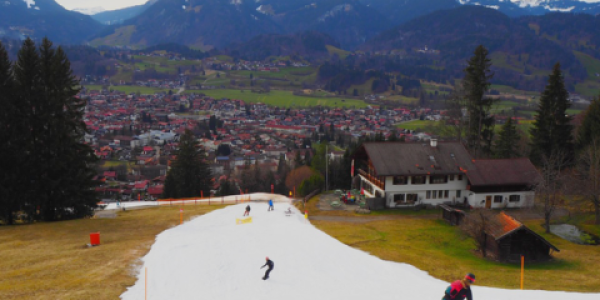New Version of Blended Sea Winds Released

Tropical cyclones are classified by their maximum wind speed. Major hurricanes have winds of at least 111 mph and can reach speeds of over 180 mph, with gusts of 200 mph. Gathering more accurate observations during these extreme wind events can help improve tropical cyclone forecasts, protecting people and property.
One way to gather these important wind observations is through satellites. The advantage of satellite‐derived winds compared to other sources like buoys is their vast spatial coverage at higher global spatial resolution. The NOAA NCEI Blended Sea Winds dataset synthesizes observations from multiple satellites (up to 16 satellites since July 1987) to create gridded wind speeds.Gridded winds are spatial-temporal wind field grids that are averages of data onto a regular grid and makes sure that the data is available for every point on the global ocean. Without gridded winds, the data will be in the original pixel level of the satellite which has gaps. Blending data fills in the temporal and spatial data gaps present in the satellite datasets, and reduces subsampling aliases and random errors.
Resolving High Winds
NOAA NCEI Blended Sea Winds (NBS) product is generated by blending observations from multiple satellite sources, including scatterometers and microwave radiometers/imagers. These traditional sensors used in previous version (NBS v1.0) have not provided accurate observations of high-speed hurricane winds because their signals saturate in very high winds or degrade in the presence of rain.
A new version of NOAA NCEI Blended Sea Winds (NBS v2.0) has been released that addresses this issue by adding two new inputs. Recent advancement in satellite wind retrievals revealed that a new L-band (1.42 GHz) instrument on the Soil Moisture Active Passive (SMAP) satellite, which started in 2012, can provide accurate hurricane winds up to 65 meters/second (145 MPH) without being affected by rain. Similarly, the Advanced Microwave Scanning Radiometer 2 (AMSR2) All-Weather channel (~6.9 GHz) provides rich information about wind speeds in and around storms. Inclusion of both SMAP and AMSR2 inputs and an error weighted blending method dramatically improves NBS v2.0, providing a long-term ocean surface wind product that can easily delineate high winds especially in and around hurricanes and other extreme oceanic storms.
Comparisons with the International Best Track Archive for Climate Stewardship (IBTrACS) data for Hurricane Irma, Tropical Cyclone Amphan, Tropical Cyclone Fantala and other tropical cyclones shows that NBS v2.0 performs better than the other existing globally gridded gap-free blended and reanalysis products.
"The new version of NOAA NCEI Blended Sea Winds is a step toward developing gap-free high quality wind products that can resolve very high winds, especially along the eyewalls of tropical cyclones and hurricanes," stated Korak Saha, NCEI and Cooperative Institute for Satellite Earth System Studies scientist.
NBS v2.0 provides both a long-term record of 30+ years retrospectively since July 1987 and a near-real- time mode with a 1-day latency. The NBS v2.0 data is publicly available through NOAA CoastWatch. Beyond its role in tropical cyclone forecast model improvement, the NOAA NCEI Blended Sea Winds product is an important element in NOAA’s Blue Economy Strategic Plan, supporting mission areas in offshore renewable energy, marine transportation, marine ecosystem and fisheries.




